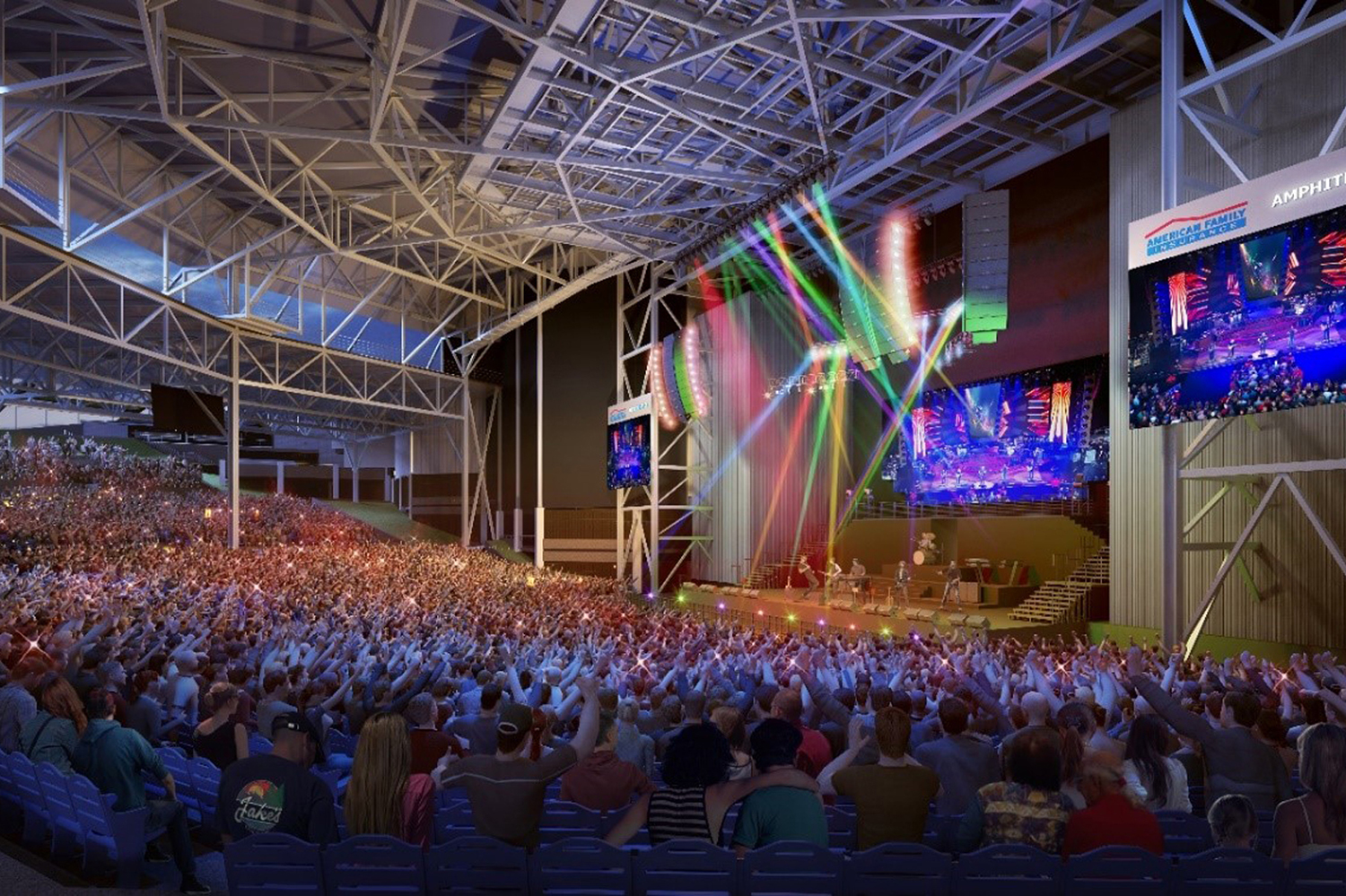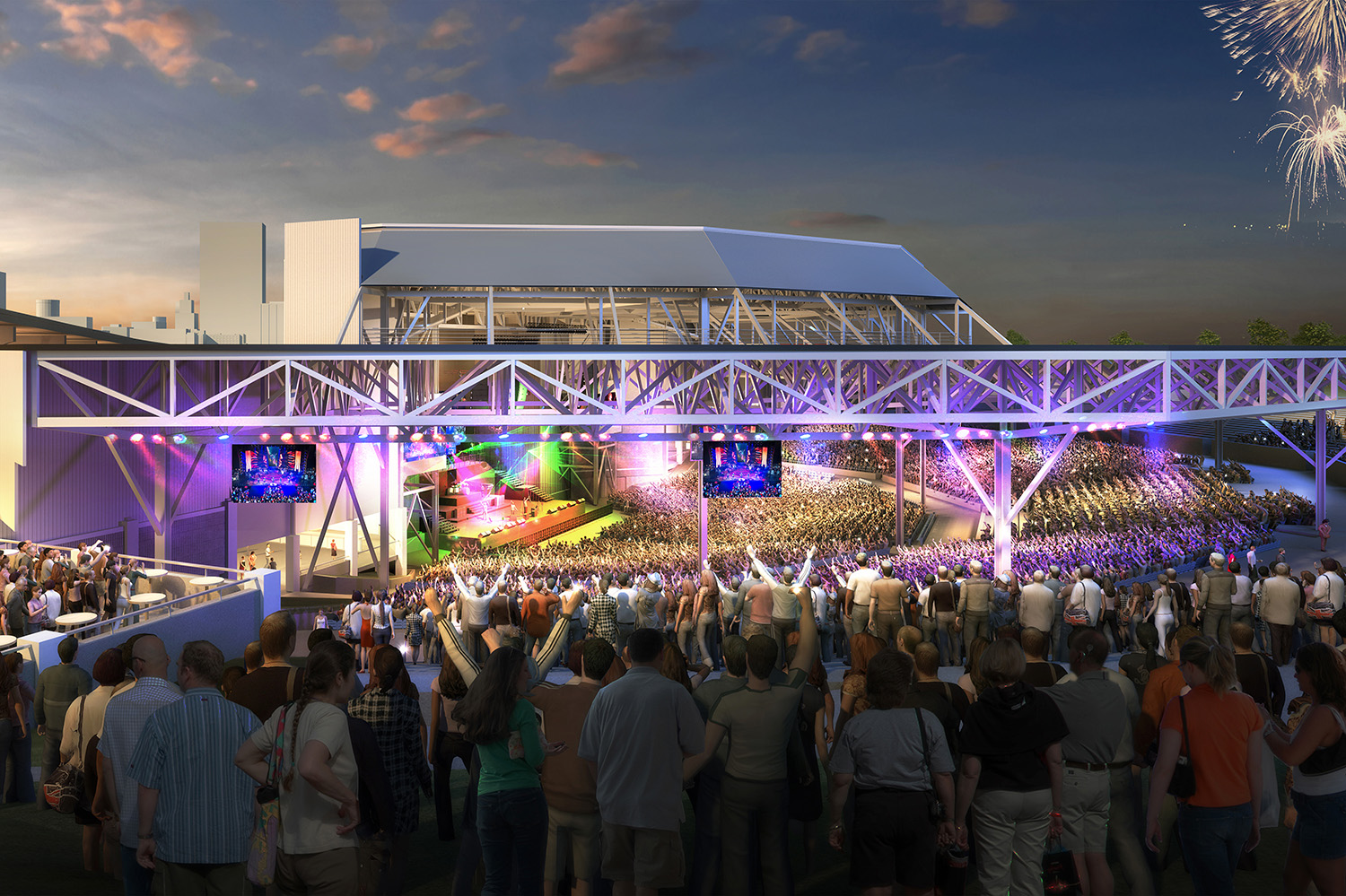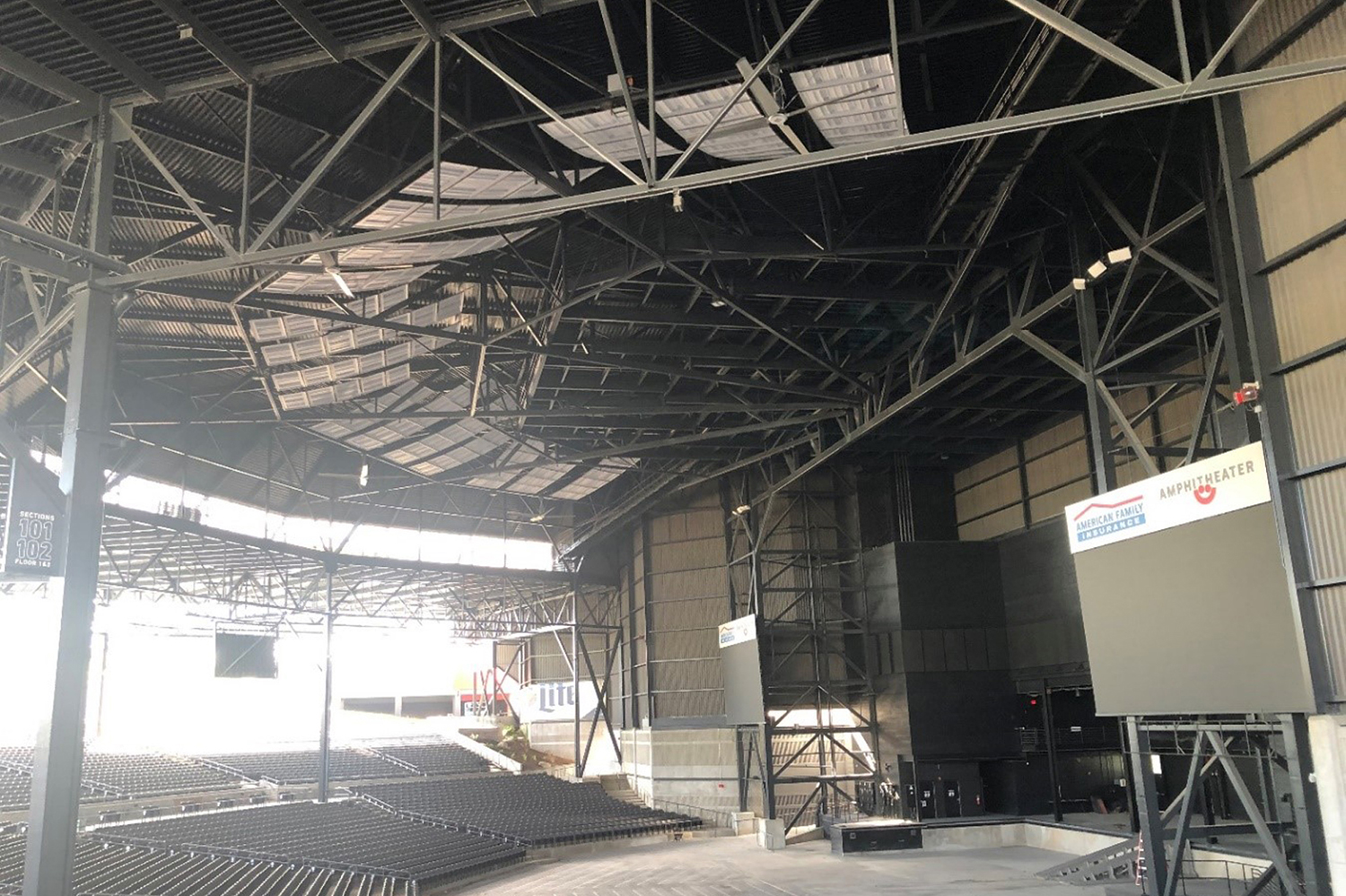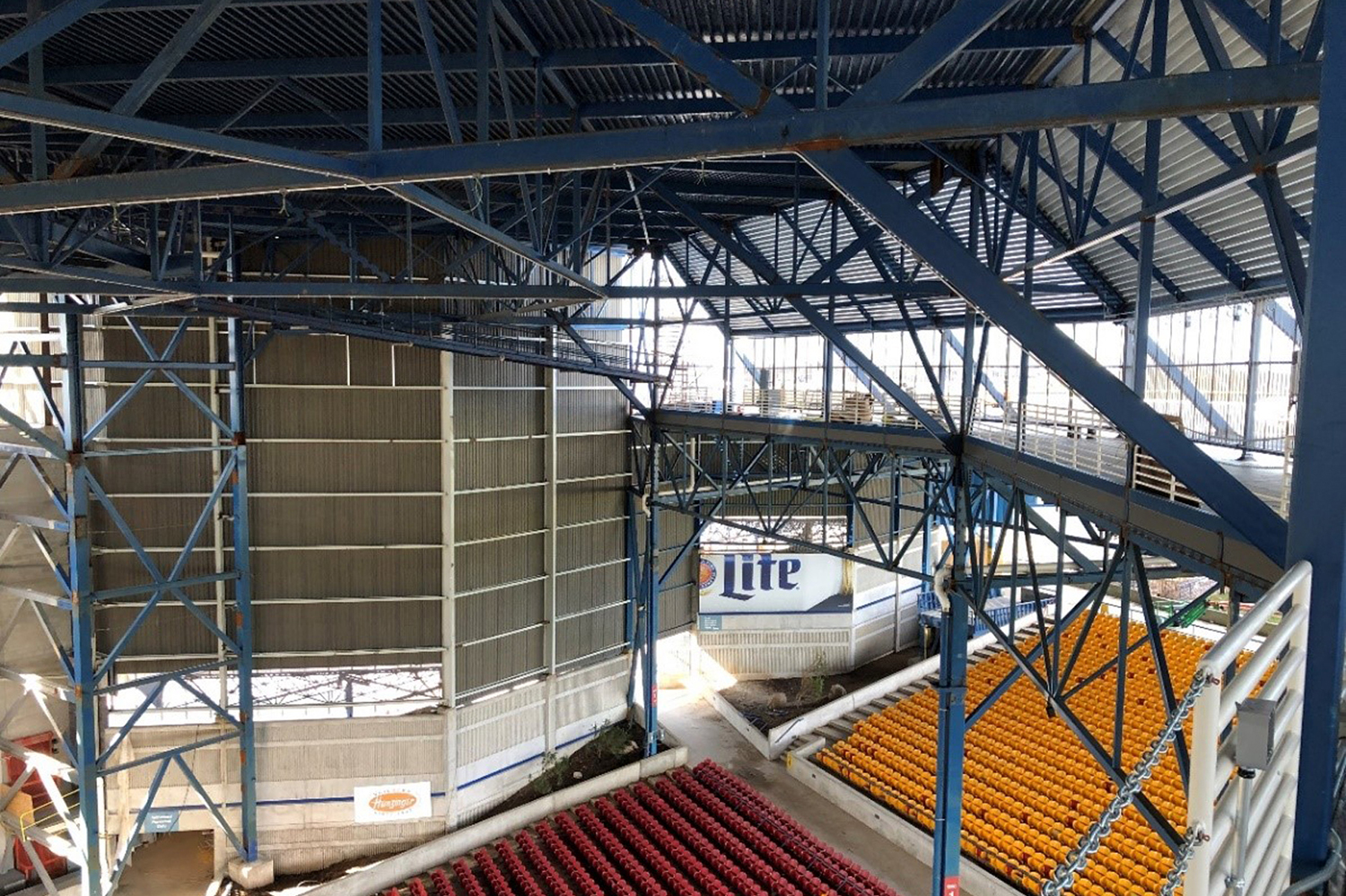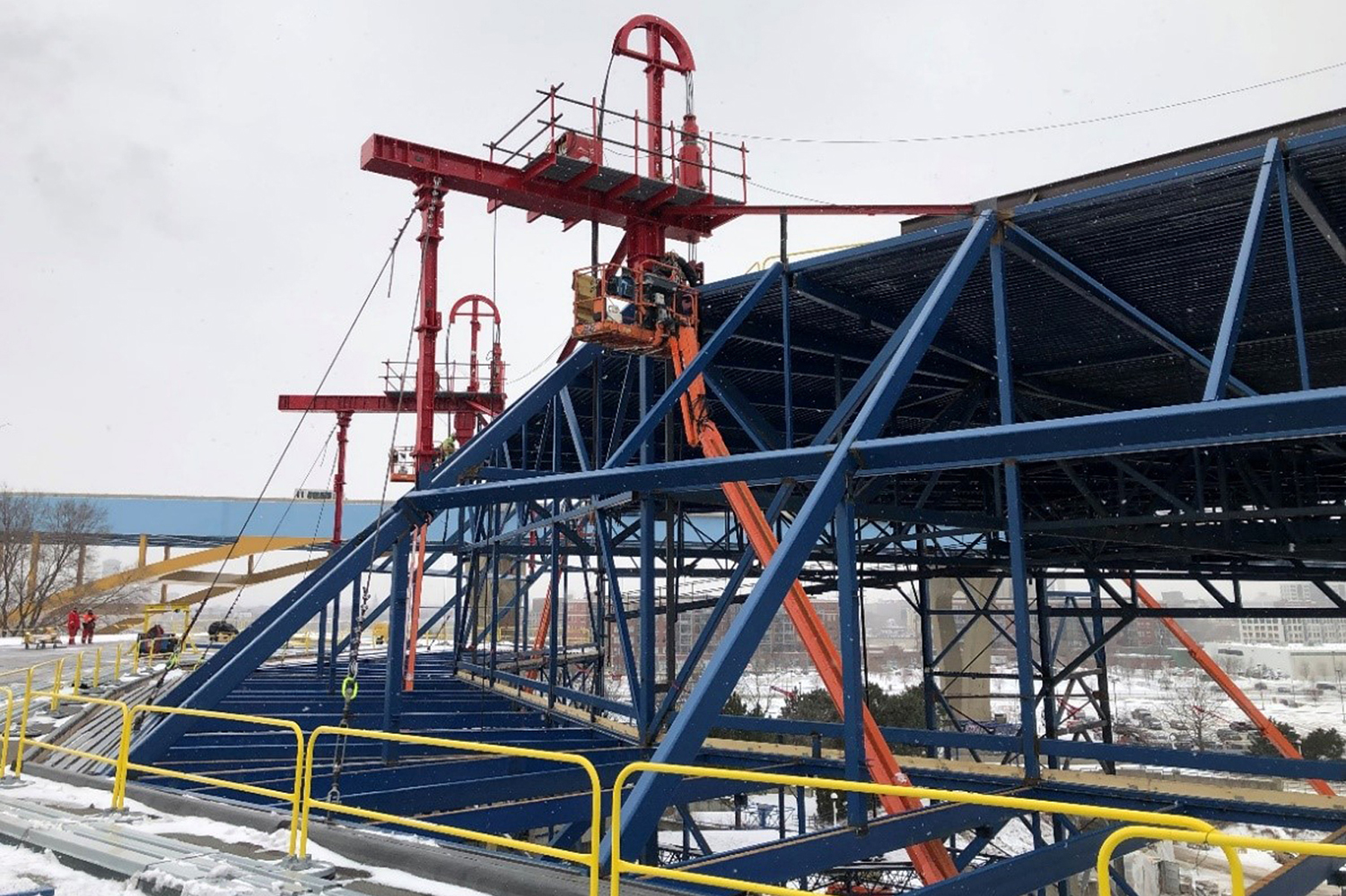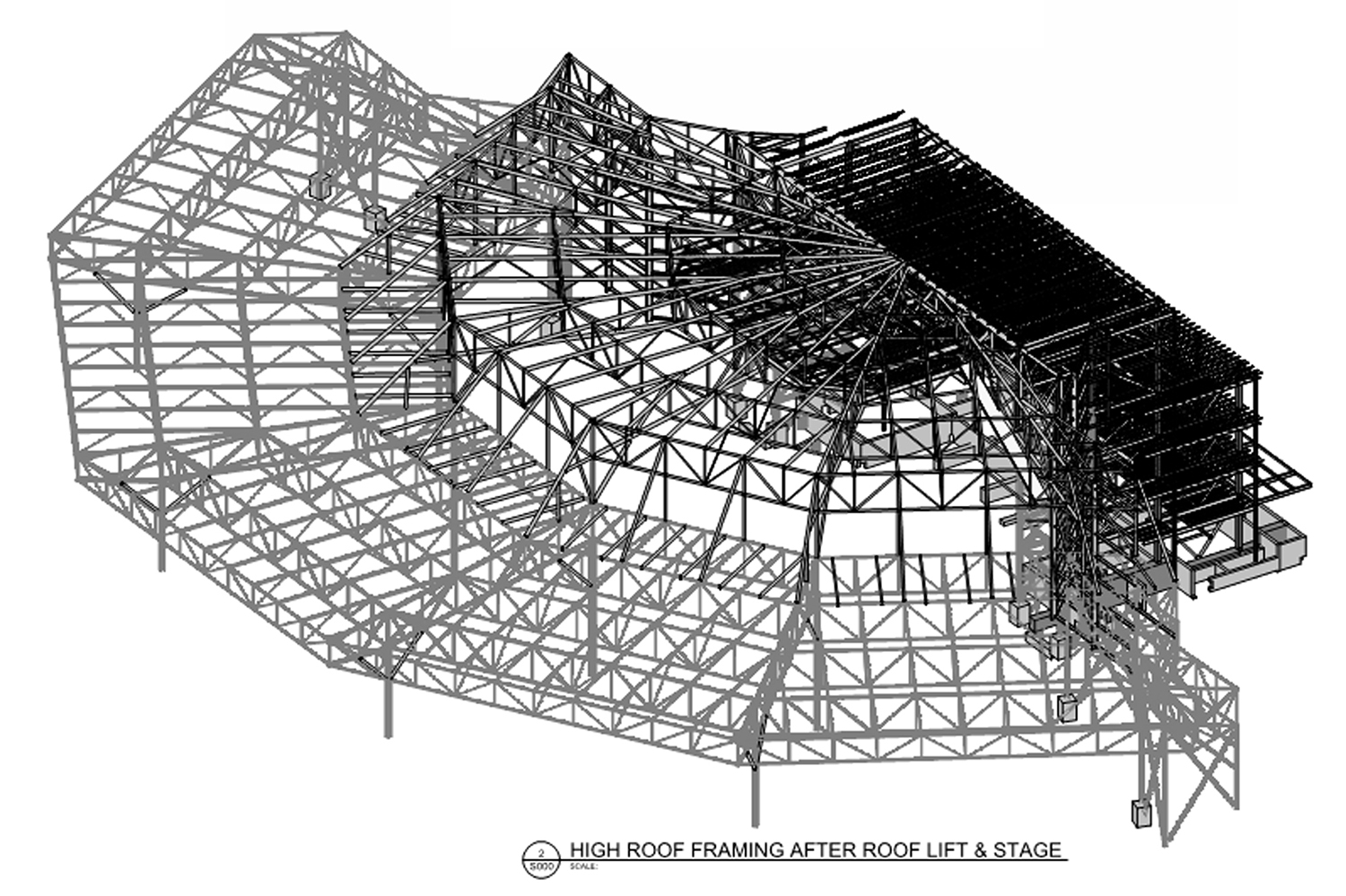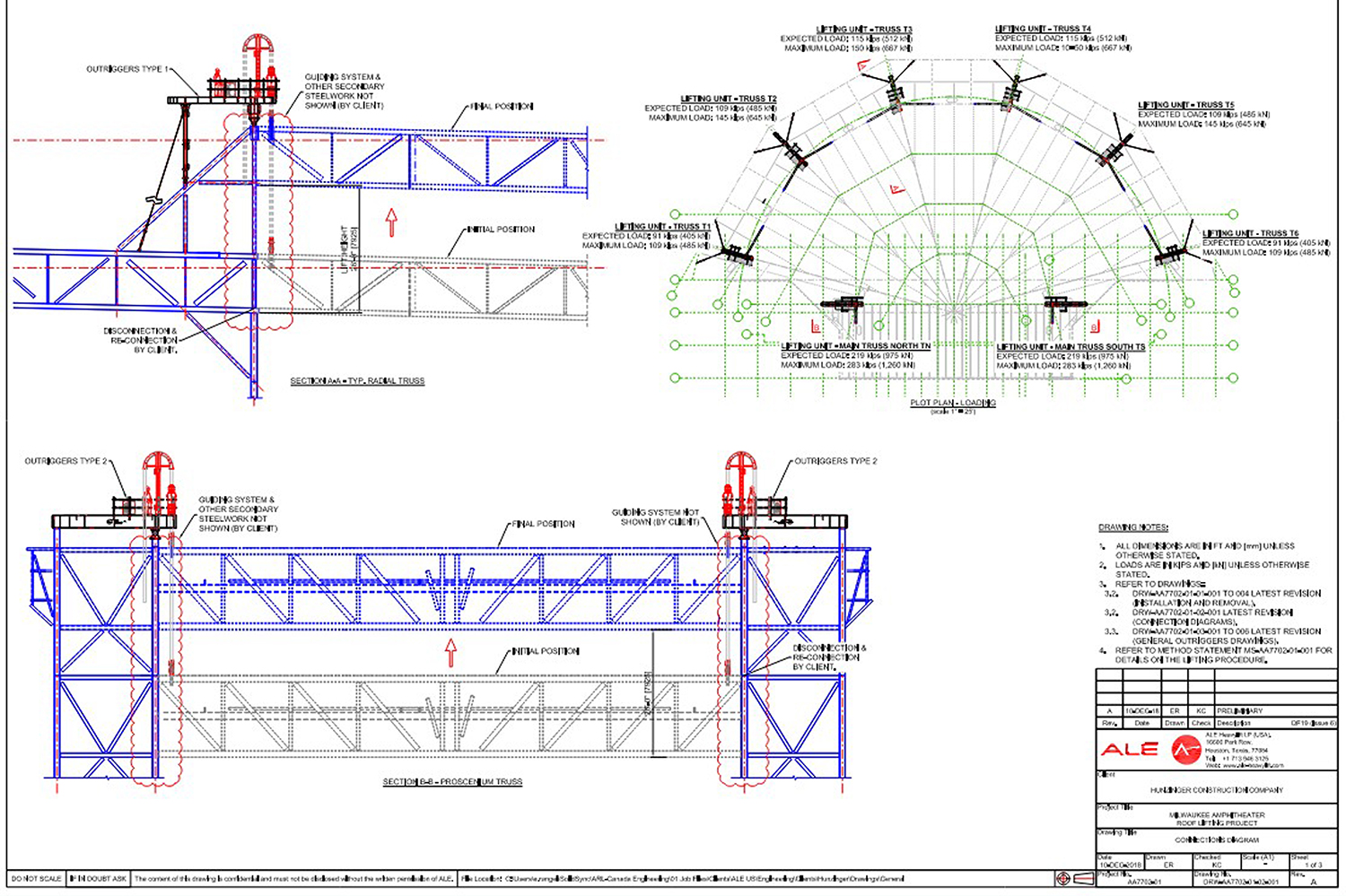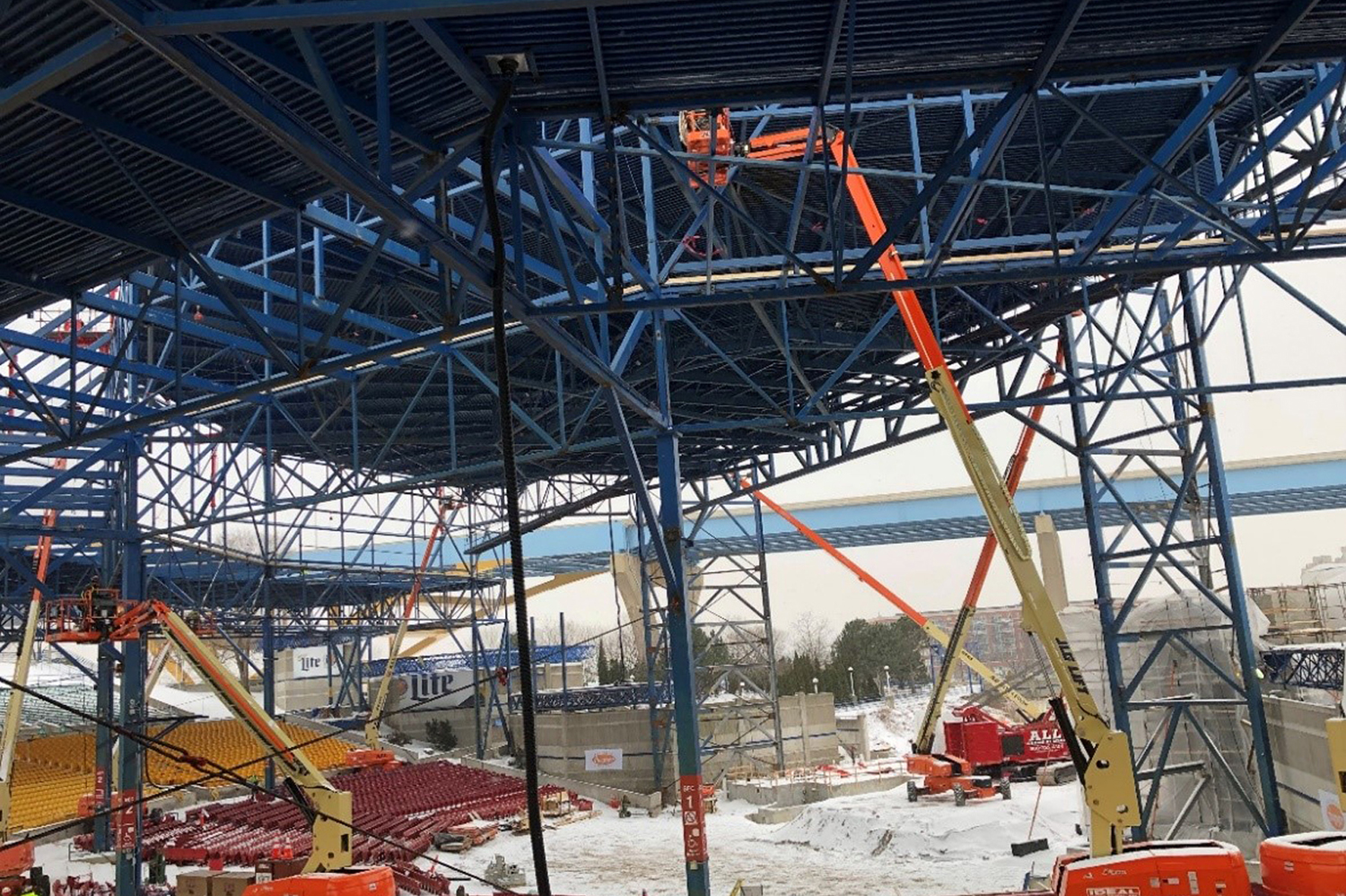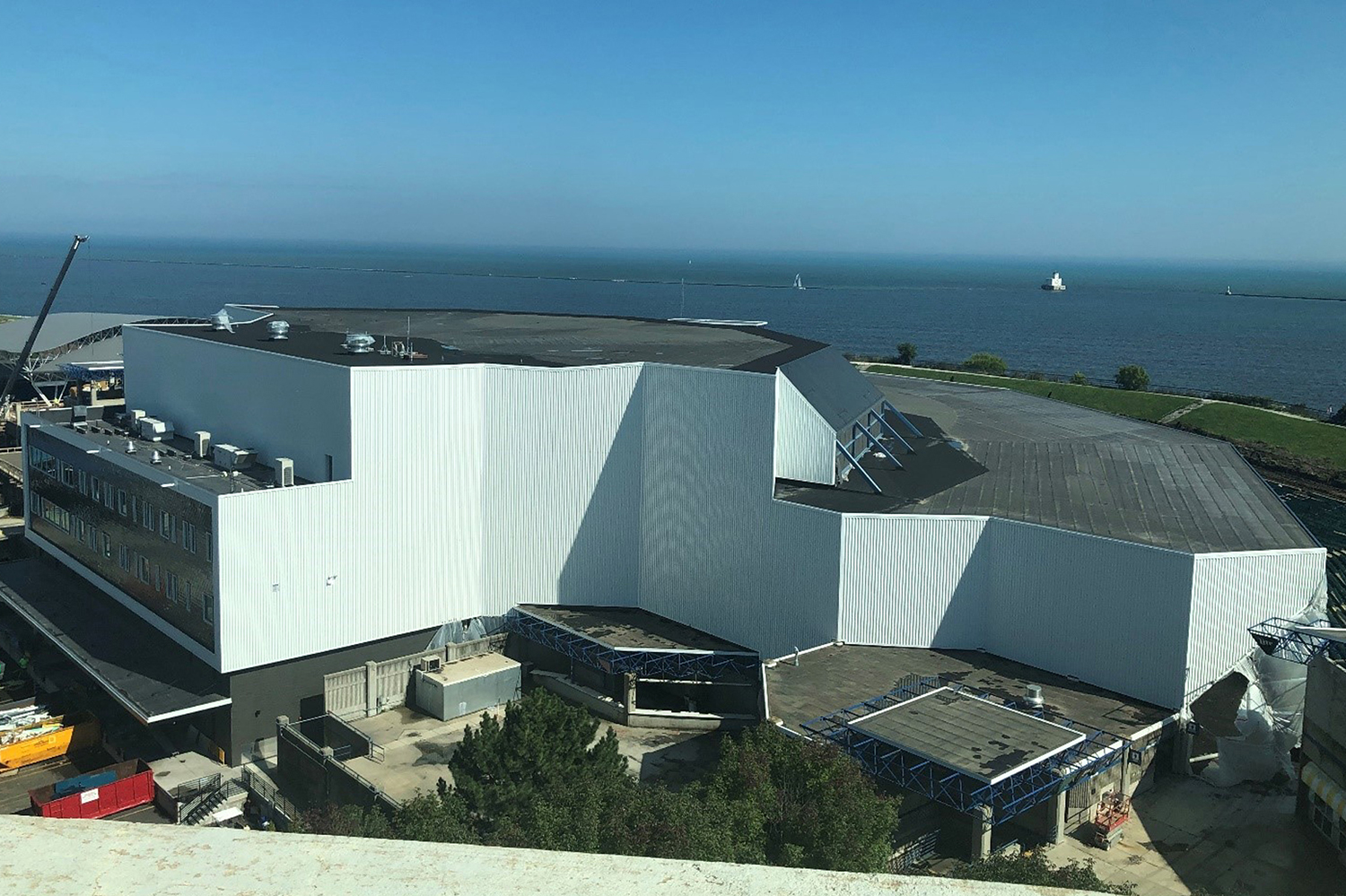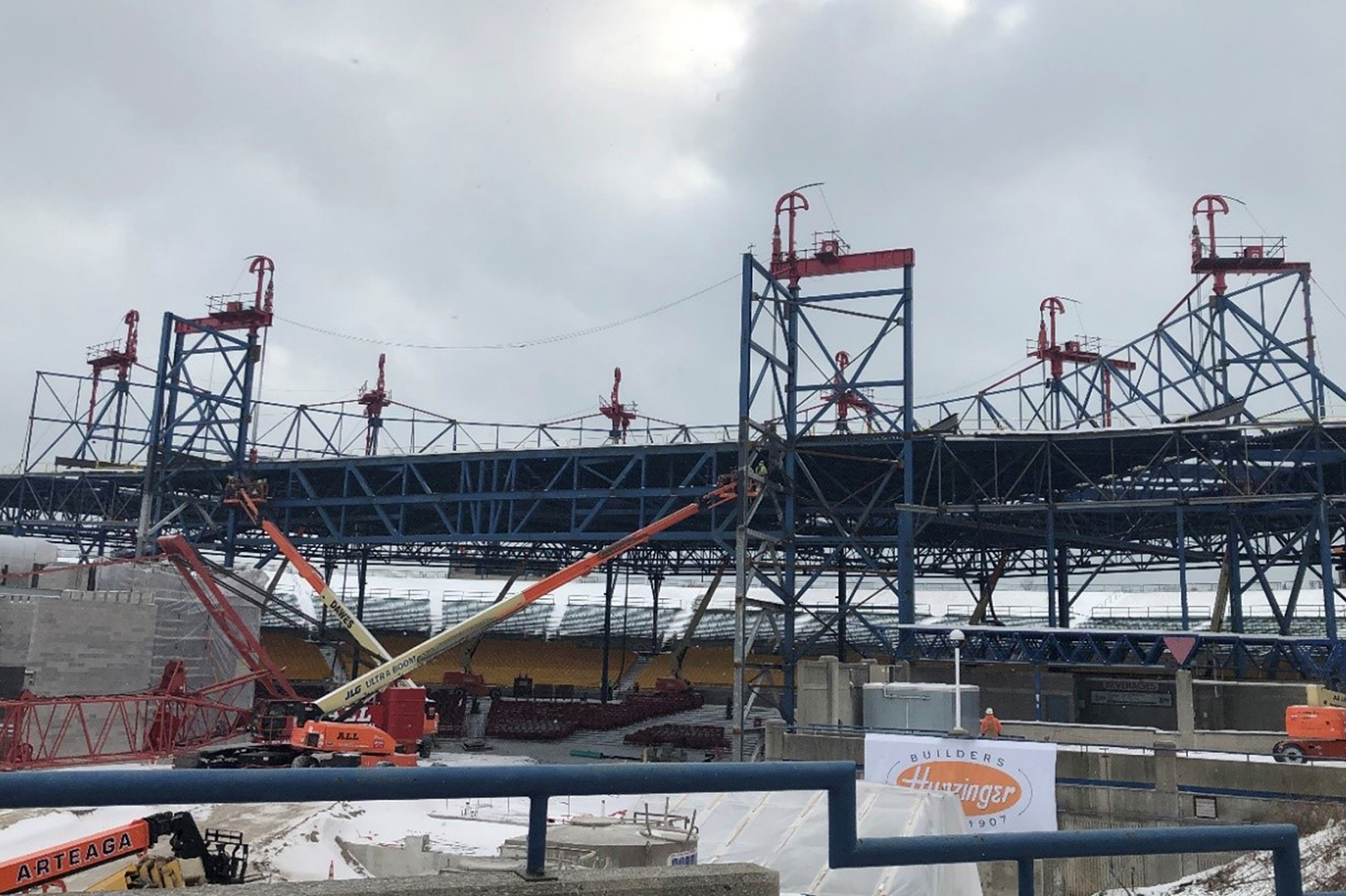AISC
American Family Insurance Amphitheater
Merit Award - $15 million to $75 million
Music lovers have raised the roof at Summerfest’s permanent venue since 1987. With modern stage acts requiring more vertical space, the project team had to raise the roof, too--to the tune of 26 ft higher.
Summerfest is an annual music festival that has been held in downtown Milwaukee along the shore of Lake Michigan since 1968. This destination event drove the need for a permanent concert venue, and after much planning and fundraising, the original 23,000-seat amphitheater (now called American Family Insurance Amphitheater) was completed in 1987. Over the years, performers grew accustomed to modern facilities that were able to accommodate elaborate stage shows that well exceeded the 39-ft clear height limit of the aging existing roof structure. To keep attracting the best talent to Summerfest, the steel-framed amphitheater needed to raise the roof from 39 ft to 65 ft to accommodate more modern stage shows.
And it did just that. The renovation was staged in two phases so that the premier concert venue could be available for performances in the prime summer festival season while construction work could take place in the colder months. Under a tight schedule and trying weather conditions, the lift was successfully completed safely without a single injury, and the upgraded venue hosted concerts a few short months later.
The existing roof structure and new framing were modeled and analyzed using RISA 3D, and the nearly identical 15° wedges allowed for modeling one wedge and replicating it with minor adjustments to complete the full model. This resulted in a model that used over 3,000 members and 3,000 nodes based on the 1987 shop drawings. The model included the new stage building with an extension of the braced bays at either side of the stage extended to three braced bays to resist the significant added wind loads and higher overturning forces. In addition, the existing columns in the seating area had knee braces added below to provide moment resistance and additional lateral stiffness.
The exposed steel followed the existing form of the amphitheater, and the lift frames were mounted to the top of the extended columns so that no significant other temporary structures were needed to support the lifted roof during the lift. The lift frame beams cantilever a couple of feet over the lifted roof with back spans to the adjacent columns or panel points, and the associated framing and added loads from lifting were modeled and analyzed, revealing that no additional reinforcing was required. Lifting lug plates were designed and welded to the frame with provisions to be removed after the lift.
Construction began with the demolition of the stage building and the removal of all siding and girts. Stage building foundation construction took place at the same time that crews were reinforcing the roof truss and connections. In order to lift the roof, the purlins connected to truss T-5 needed to be cut, so temporary steel beams were required to support the purlins and span between radial trusses. The whole and cut trusses were modeled, as were the new extended steel columns, and rotation and displacement values were calculated and compared. When cutting the truss member for the lift, a larger gap needed to be provided for clearance during the lift and to align with the final lifted position.
The lift contractor used 200-ton-capacity hydraulic strand jacks mounted to lifting beams to pull up the roof. The jacks were interconnected at the control room, where the progress of the lift was monitored to ensure uniform lifting. The weight of the roof portions at each jack needed to be calculated carefully to ensure uniform lifting. By the time the lift beams and equipment arrived on site, the support steel was erected and the temporary steel and lifting lugs were installed. Simultaneously, the stage, which had been demolished, was being reconstructed. A 300-ft-boom crane was used to install the lift beams and jacks.
Once the lift beams and jacks were installed and interconnected at the control room, the strand jacks were loaded to 90% of the anticipated load so the lugs could seat and any lift issues addressed. The lift took place the next day when the morning temperature reached a low of -10° F. The jacks were loaded to the anticipated weight, and the roof trusses and purlins were cut loose. The member cuts were widened to the anticipated rotation of the trusses following a loss of continuity from the cuts, and then the lift proceeded. The stroke of the hydraulic jacks was 18 in., allowing for length adjustments between strokes to ensure a uniform lift. The lift stopped at points where the lower chord of the lifted trusses needed to clear the top chord of the remaining trusses to grind portions of the cut ends for clearance, and the operation proceeded for about six hours to reach the 26-ft level when the jacks were secured for the night.
Reattachment of the trusses to the new upper frame began the next morning. The main trusses and lift jacks were set at eight locations to reattach the roof as quickly as possible, and the lifted roof was fully re-supported within two days, with most main connections completed in about a week.
For more on the American Family Insurance Amphitheater project, see “Upward Bound” in the January 2021 issue of Modern Steel Construction.
Judge comment: “It is truly innovative to be able to analyze the existing structure from the 80s, to be able to come up with a cost-efficient system of lifting the trusses and developing the methodology to cut them loose, keep them stable, and to be able to reattach them 26 ft higher than what was originally designed. It's very cost-effective to reuse these existing structures as opposed to the environmental impacts of tearing them down. It's a great example of what can be done with steel in these adaptive reuse situations.” -David Horowitz, executive vice president, AECOM Tishman
Owner: Milwaukee World Festival, Inc. (Summerfest), Milwaukee
General contractor: Hunzinger Construction, Brookfield, Wis.
Architect: Eppstein Uhen Architects, Milwaukee
Structural engineer: Larson Engineering, Inc., Wauwatosa, Wis.
Consultant: Mammoet (formerly ALE Heavy Lift), Rosharon, Texas
Fabricator: Ace Iron and Steel, Inc., Milwaukee *AISC full member*
Erector: SPE, Inc., Little Chute, Wis. *AISC associate member*
- Project Category: Year 2023
- Location: Milwaukee, WI
- Submitting Firm: Larson Engineering, Inc.
- Photo Credit: 1, 2 - Eppstein Uhen Architects; 3, 4, 5, 8, 9, 10 - Robert Schumacher; 6 - Larson Engineering, Inc.; 7 - Mammoet

